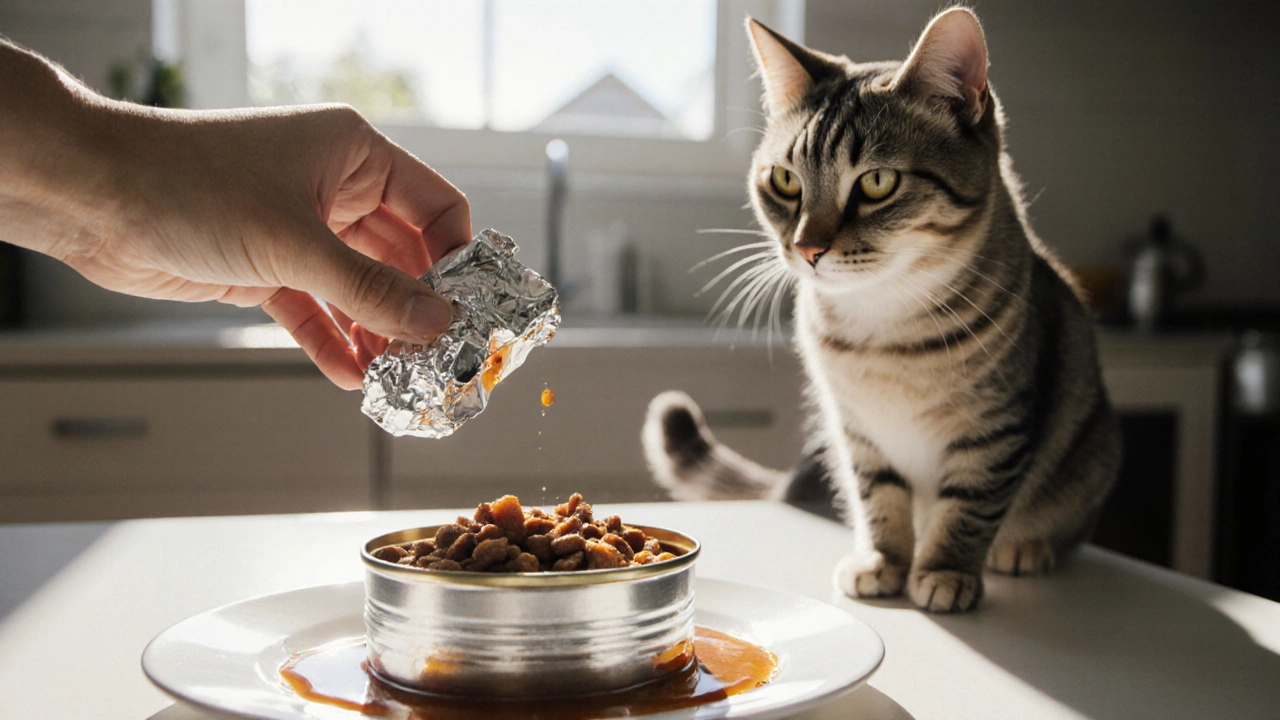Refrigerated Cat Food: Fresh Nutrition for Your Cat
When talking about refrigerated cat food, cat meals that are kept chilled to preserve freshness and nutrients. Also known as cold cat food, it offers a higher moisture content and a shorter shelf‑life than pantry‑stable kibble. A closely related item is wet cat food, soft, often canned or pouch‑packed meals that also rely on moisture for palatability. Another key concept is cat nutrition, the balance of protein, fats, vitamins, and minerals cats need to thrive. Finally, food safety, practices that keep pet food free from spoilage and pathogens is essential when handling any refrigerated product.
Why Choose Refrigerated Cat Food?
Refrigerated cat food provides a moisture boost that dry kibble simply can’t match. Cats are natural water‑seekers, yet many don’t drink enough on their own. By serving a meal that’s already packed with water, you help keep urinary health in check and support kidney function. This moisture advantage also translates into softer textures, making the food easier for senior cats or those with dental issues. In short, refrigerated meals enhance hydration while delivering the same tasty experience.
Beyond hydration, the nutrient profile of refrigerated meals tends to stay closer to the original ingredients. Because the food isn’t exposed to high‑heat processing, delicate vitamins like B‑complex and certain antioxidants remain more intact. This means your cat gets a fresher source of the nutrients they need for shiny coats and sharp reflexes. The result is a diet that mirrors what a cat might get from fresh‑caught prey, just in a convenient package.
Storing refrigerated cat food correctly is straightforward but crucial. Keep the unopened packs in the coldest part of your fridge, ideally at 4 °C (39 °F) or below. Once opened, most brands recommend using the product within 3‑5 days and always resealing the package tightly. If you notice any off‑smell, discoloration, or slime, it’s safest to discard it. Following these simple steps ensures the food stays safe and your cat stays healthy.
Comparing refrigerated meals to other options highlights a few trade‑offs. Dry kibble scores high on convenience and shelf‑life, but it can be low in moisture and may contain more fillers. Canned wet food offers moisture but often includes preservatives to extend its shelf‑life after opening. Refrigerated cat food lands in the middle, delivering fresh‑like quality while still being easy to portion and store for a few days. The price point can be slightly higher, but many owners find the health benefits justify the cost.
When picking a brand, read the ingredient list carefully. Look for named protein sources such as “chicken” or “salmon” rather than generic “meat meal.” Pay attention to added sugars, artificial colors, or excessive grain fillers. Brands that highlight transparency, sourcing from reputable farms, and minimal processing tend to produce the most trustworthy products. Checking for third‑party certifications can also give you added confidence in the food’s safety and nutritional claims.
All this info sets the stage for the deeper dives you’ll find below. Whether you’re after storage tips, nutrition breakdowns, or brand comparisons, the articles ahead cover every angle of refrigerated cat food. Browse the collection to unlock practical advice you can start using today, and give your feline the fresh, tasty meals they deserve.

How Fast Does Wet Cat Food Spoil? Shelf Life, Storage Tips & Safety
Learn how long wet cat food lasts, how to store opened cans, spoilage signs, and safety tips to protect your cat from foodborne illness.
View more